The sign is similar to signs indicating historical places in other cities: Paris
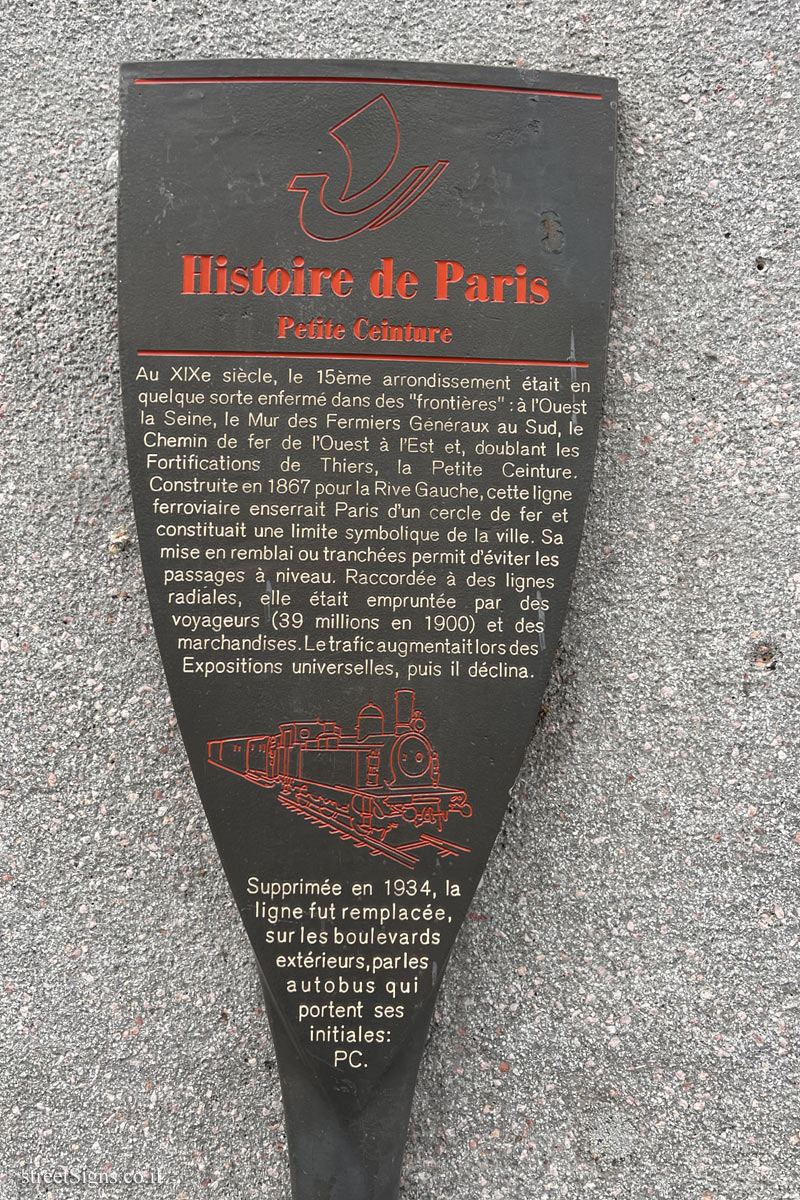 Click for sign's details
Click for sign's details, Lisbon
 Click for sign's details
Click for sign's details, Porto
 Click for sign's details
Click for sign's details. So it is likely that they were all designed by the same designer (Philippe Starck)
The sign describes the building that is currently used as the Avignon Opera House. A building opened in 1847, designed by Léon Feuchère and Théodore Charpentier and listed as a French historical heritage site
The place was photographed on the same day by the same photographer
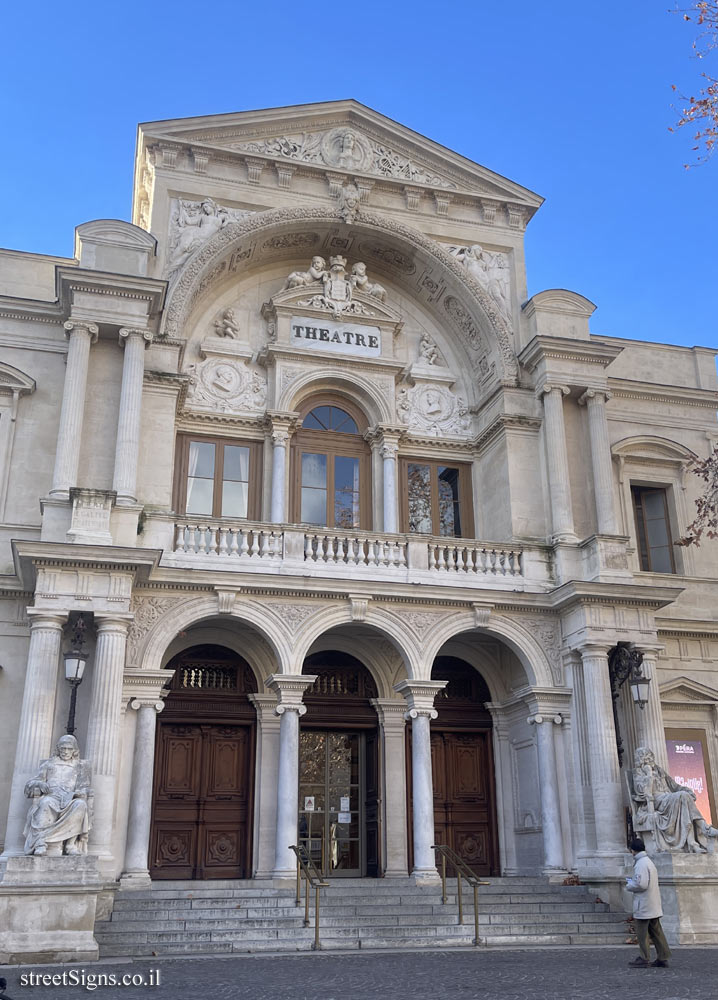 Click for a larger image
Click for a larger image The sculptures that appear on the front of the building showing the playwrights Moliere and Pierre Corneille, made by the brothers Jean-Louis Brian and Joseph Brian appear here enlarged:
Moliere
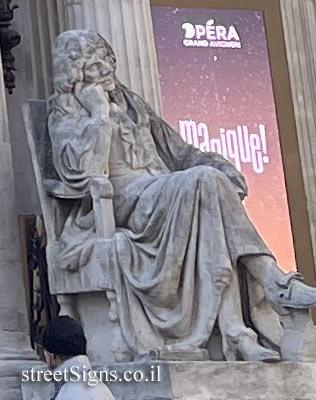 Click for a larger image
Click for a larger image Pierre Corneille
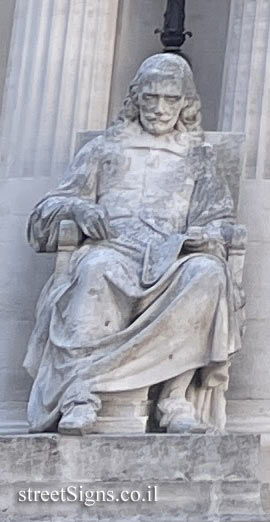 Click for a larger image
Click for a larger image The illustration in the center of the sign, which is the illustration of Molière’s statue on the front of the building, appears here at magnification
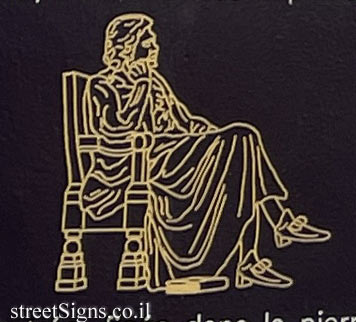 Click for a larger image
Click for a larger image Next to the sign is another sign indicating the fact (which also appears on the sign), that there used to be a nunnery of Saint Laurent
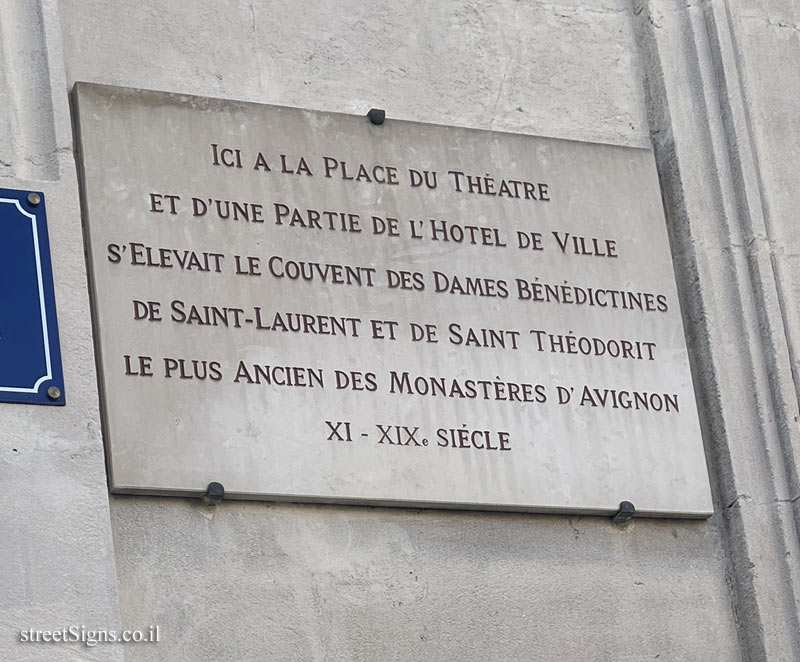 Click for sign's details Translation of the text on the sign
Click for sign's details Translation of the text on the sign:
European City of Culture
History of the City Municipal Theatre In the 19th century, the city decided to build a new theatre on the site of the convent of the nuns of Saint-Laurent. Completed in 1825, with a Greco-Roman style façade decorated with columns and allegorical statues, the building was ravaged by a fire in 1846. Its reconstruction on the same site was immediately decided. Théodore Charpentier and Léon Feuchères drew up the plans. The inauguration resounded with the strains of "William Tell" on 23 November 1847. The elegant façade, organised around a large arch which shelters the loggia of the foyer, contributes to the decoration of the Place de l’Horloge.
[illustration of Molière]
At the entrance, frozen in stone by the Brian brothers, Molière and Corneille sit enthroned. The interior presents a beautiful Italian-style room composed of a parterre and four galleries. The rich annual program respects a strong lyrical tradition.
Learn about:

 Click for sign's details, Lisbon
Click for sign's details, Lisbon  Click for sign's details, Porto
Click for sign's details, Porto  Click for sign's details. So it is likely that they were all designed by the same designer (Philippe Starck)
Click for sign's details. So it is likely that they were all designed by the same designer (Philippe Starck)  Click for a larger image
Click for a larger image  Click for a larger image
Click for a larger image  Click for a larger image
Click for a larger image  Click for a larger image
Click for a larger image  Click for sign's details
Click for sign's details